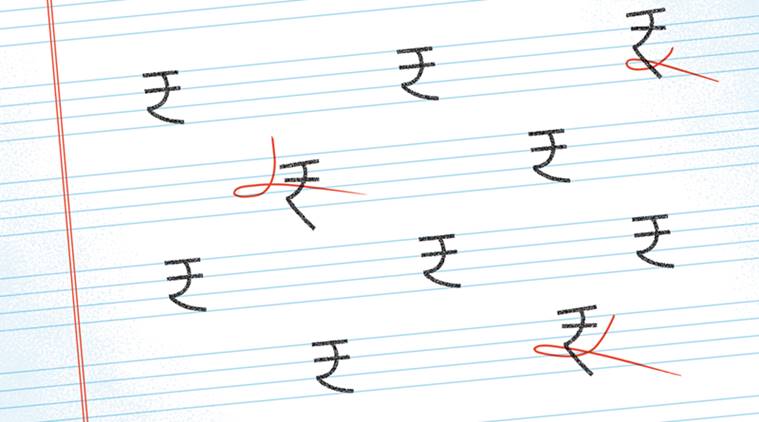Let the elite pay
To reform education system, provide a level playing field, regardless of caste, sex, or income. Stop subsidising higher education for the rich.

At present, there are close to 5.5 lakh students studying abroad, with over 2,00,000 in the US alone. (Illustration by C R Sasikumar)
In my recent book The New Wealth of Nations, I had documented how the future battle between nations was not on petty (but damaging) tariff wars a la Trump, but rather on what each country did to enhance its education wealth. Some recent statistics on higher education in India are sobering. The government (state plus Centre) spends a third of its budget on education, and a further third of that on higher education — in 2018/19, the government will likely spend close to Rs 220 thousand crore (thcr) on higher education. Of this, the central government is expected to spend Rs 30 thcr.
We have a messed-up education system, and have had one in place since Independence. Our first mistake was to not expand primary and secondary education for the aam aurat; instead, we proceeded to build temples of wisdom for the elite (higher education in general, IITs in particular). Just for clarification — the objection is not to expand higher education, but to its expansion at the expense of providing basic education to all.
One mistake has fed into another to yield madness at every corner. The children of the poorest of the poor, the ones most discriminated against on the basis of caste or religion, did not receive basic quality education, so they could not proceed to higher education. The ones that were able to go to school — and they did so in poorly-staffed government schools — did not receive quality education, and therefore were not able to compete with the rich kids when it came to college.
Successive governments, in typical action-reaction fashion, decided to provide continuous band-aids to ensure social mobility and peace. It stipulated, nay legalised, non-merit interventions. School admissions were guaranteed for individuals with poor education (I believe the legal term is “reservations”). In recent years, at premier institutes like IIT, if the average admissions score for a general category student is X, for the reserved SC/ST category it is half X.
According to the just-released cut-offs for IIT Kanpur, the minimum number of marks required for an SC/ST to gain admission is half that of a General candidate. The evil market being what it is, what are the much below average students going to do when they graduate? The perfect Indian system will reward them with government jobs which, many are demanding, should also guarantee promotion.
Ability is almost surely normally distributed, and a large amount of this divergence in market perceived “ability” is due to our (elite) mistakes in the provision of quality education to the non-elite. But the tragedy gets worse. The upper-class students (actually their parents) have learnt to take advantage of the system. They pay taxes and spend a lot of money on quality high-school education. But they are not stupid. They want a handsome return on their investment. And they obtain this return via getting admission into high-quality government colleges for which they demand that they pay relatively little.
India must be one of the very few countries in the world (along with its Subcontinental neighbours) where the average good quality high school education costs more than five times the average good quality college education. In most civilised economies, the ratio is the opposite.
At present, there are close to 5.5 lakh students studying abroad, with over 2,00,000 in the US alone. Average tuition cost in a US college (state and private) is around $30,000 a year or Rs 0.2 crore a year. For 2,00,000 students that is an expenditure of Rs 40,000 crore. Assume that the average tuition cost for the remaining 3.5 lakh individuals is half that of the US. Total expenditure on tuition, by Indians studying abroad, comes to a total of Rs 75 thcr. The average duration of study of an Indian abroad is likely to be three years — hence, we arrive at a figure of about Rs 25 thcr spent by Indians abroad each student year. The central government, as shown above, spends approximately this same amount.
On every occasion when the government has tried to raise fees for students in Delhi, the students protest. Forget fees, I remember students rioted in the 1970s (and I am sure later) when bus fares were raised. It is instructive to look at the fees a Delhi University student pays in tuition each year — around Rs 3,000. My Rs 3,000 fee estimate is for tuition fees and other associated payments. Embarrassingly, the D-School tuition is listed as Rs 18 a month; worse, the Prevention of Sexual Harassment Fund collects Rs 10 from each student. Yeh joke hai ya policy?
Let us see what the government university entrant pays for her high school fees. Government schools account for 55 per cent of all students; government colleges for approximately 45 per cent of students. But what does Sita pay for her high school (class 12) fees? A private unaided higher secondary school in urban areas [NSSO survey 71st round, 2014; non-government figures inflated by 15 per cent to yield 2018 values] charges Rs 23,000. All the above numbers are averages for India urban; for cities like Delhi NCR, private unaided schools are charging about five to seven times this amount.
But when Sita goes to college — in a humanities course — at a government college (generally much better than private colleges) she pays only Rs 4,000 in tuition and associated fees. If she chooses to go study science or engineering, she will pay Rs 25,000 in a government college, as opposed to Rs 85,000 in a private unaided university. On average, she pays Rs 14,000 a year for college education (the humanities and professional courses each contain 50 per cent of the students).
We need to change our education system which is for the rich, by the elite, with sops and band-aids for the not-so-fortunate. My modest proposal to begin to modify the education system and make it a truly level playing field is as follows. Each student pays for her college education the same she paid for her high school education. Simple. The government will gain, at a minimum, Rs 13,000 crore a year, or nearly half the annual expenditure of the central government. This approximate figure is obtained as follows. Each year, approximately 11 million students enter college, and about 45 per cent of these students, about 5 million, did not attend a government high school. On average, they paid about Rs 40,000 a year in their last year of high school (average of general and technical/professional education).
My suggestion is that the 5 million students who did not attend a government high school pay Rs 40,000 for tuition; this will mean an extra Rs 26,000 or (26000*5 mil) Rs 13 thcr for the government. This is a conservative estimate. The exact gains are likely to be substantially higher.
The revenue gains for the government from this much-needed education reform are large. This extra money should allow the government to redo the Indian education system from the primary level onwards. Today, it is no longer utopian to believe in cash transfers — if Telangana farmers can get cash transfers per acre of ownership, why can’t the much easier task of transferring student vouchers to each child from the age of 6.
This (the Centre for Civil Society can help) voucher allows each primary and secondary school student to go to a school of her choice. Government schools will be forced to perform — or perish. There will be a chain reaction to the existing defunct, feudal, and corrupt system of education in India. And possibly in another 10-15 years, we won’t need any caste-based reservations for schools, and/or jobs. And the SC/ST students will stand as equals with others in every sense of the world.
The writer is a senior India analyst at Observatory Group, a New York-based macro policy advisory group, and part-time member of the PM’s Economic Advisory Council. Views are personal
For all the latest Opinion News, download Indian Express App
More From Surjit S Bhalla
- Inflation, not yet viralPronouncing the rebirth, or even significant acceleration in inflation, may be a trifle premature..
- Will Karnataka toll for the Congress?The Congress stands to both gain, and lose, more from the Karnataka poll results than the BJP. That is the simple asymmetry behind this important…
- Robust job growth, not fake newsThe best macro-economic performance ever in India was obtained in 2014-18. Modi’s challenge remains the reining in of the enemies within...







































No hay comentarios:
Publicar un comentario